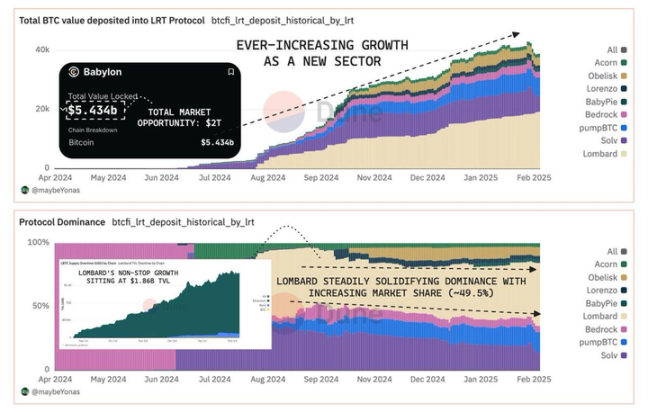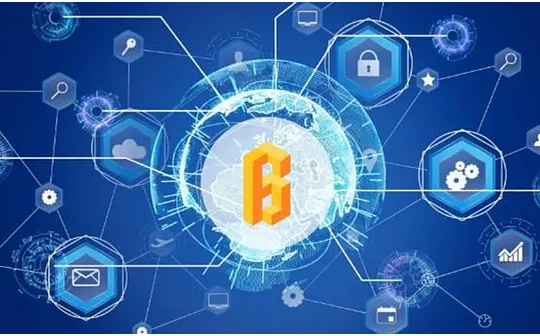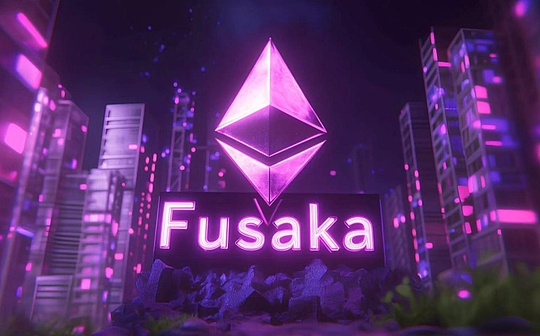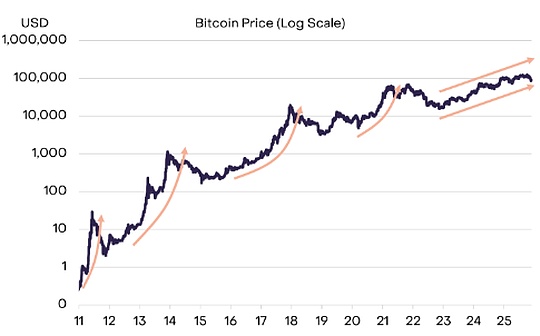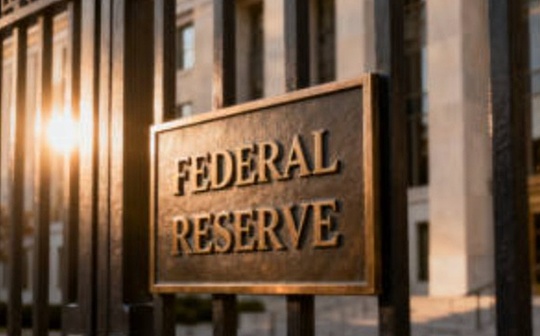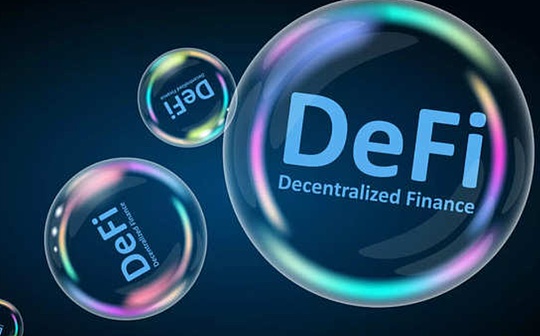
Written by: Alan Draper Translated by: Vernacular Blockchain
The financial world has remained relatively stable until the emergence of decentralized finance (DeFi), which brought about significant changes.DeFi has redefined finance through decentralized borrowing and ownership, and has the potential to change every aspect of daily life.
Today, we will explore leading DeFi platforms such as Aave, Lido, Compound and Uniswap to analyze their service content, the rationale for DeFi, security, and how to choose the DeFi platform that best suits your needs.
Best DeFi Platform Review – In-depth Learning.In this section, we will briefly review each DeFi platform to help you understand their services and benefits.Our goal is to enable you to better judge whether each platform is suitable for you after understanding the characteristics of each platform.
1. Lido Finance – the best DeFi staking platform, connecting more than 100 applications
Lido Finance is a decentralized financial platform focused on staking, operated by a mission-driven decentralized autonomous organization (DAO), and all decisions are made through public votes by LDO (the native token of the platform).
The platform is known for its high security and application of cutting-edge technologies.Lido focuses on Ethereum staking, specifically, stETH (the Ethereum version launched by Lido), which is used to pay rewards to users who staking ETH.You can unstake any stETH at any time and convert it to ETH at a 1:1 ratio.
Lido now also allows users to stake MATICs under the same system through stMATIC.Pledges of ETH or MATIC do not require locking assets, and the entire service is completely unmanaged.
If you wish to hold stETH, please note that Lido has more than 100 apps connected, you can use it for borrowing, as collateral and more.Recently, Lido is expanding its services, which may include other assets in addition to ETH staking, further enriching its staking ecosystem to attract more users.
DeFi Service: Pledge Total Value Locked: US$30.82 billion
2. Aave – the best DeFi borrowing platform with one of the longest operating records
Aave is one of the leaders in the DeFi field, providing cryptocurrency borrowing services.It also allows you to earn passive income by pledging AAVE native Tokens (4.60% APR), GHO (5.30% APR), and ABPT (11.70% APR).
In terms of borrowing services, Aave supports approximately 30 cryptocurrencies, including ETH, WBTC, wstETH, USDT, USDC, AAVE, DAI, and LINK.
Additionally, Aave is known for its innovation in the DeFi field.Since its launch in 2017, it has expanded significantly, becoming one of the longest-running DeFi platforms.Although Aave’s total value lockout (TVL) is not the highest, its trading volume is the largest in the entire DeFi sector.
Aave is completely unmanaged, open source, and is governed by the community.In addition, borrowers and lenders can decide and enforce loan terms through smart contracts.At the end of 2024, Aave launched Aave V3 on the zkSync Era main network, improving transaction efficiency.
If you want to learn more, you can read our Aave guide.
DeFi services: borrowing agents, pledges, total value locked: US$17.38 billion
3. Uniswap – the largest decentralized trading platform and the best DeFi trading platform
Uniswap is currently the largest decentralized trading platform (DEX) on the market and is also the top trading platform in the DeFi field, with more than 1,500 trading pairs.
More importantly, Uniswap’s powerful DeFi platform provides a number of services, including token exchange, earning income by providing liquidity, and building dApps using the Uniswap protocol.It also integrates with over 300 apps such as wallets, dApps, and aggregators.
While Uniswap may not be the largest DeFi platform overall, it is unparalleled in the field of decentralized trading platforms (DEX).Users can trade on a completely transparent, decentralized platform without any intermediary and complete transactions through smart contracts.Recently, the platform has focused on improving liquidity delivery and user experience, especially through its V3 model, allowing the use of centralized liquidity pools.
It is relatively simple for a DEX to learn how to trade on Uniswap, as the site has a user-friendly and concise design.Uniswap is known for constantly introducing new tokens, so if you are interested in trading the latest cryptocurrencies, you might as well check out the popular new tokens on Uniswap to increase your portfolio.
DeFi Services: Transactions and Borrowing Agents Total Value Locked: US$5.69 billion
4. MakerDAO – a borrowing platform that provides DAI stablecoins
MakerDAO is a large decentralized collateralized debt position platform (CDP platform) based on Ethereum.In other words, it allows users to borrow cryptocurrencies.Users can initiate a CDP by using ETH or other Ethereum-based assets as collateral.
MakerDAO’s main goal is to ensure that its stablecoin, DAI, one of the most popular and widely used stablecoins in the world, remains pegged to the US dollar.
MKR is a native token of Maker, used to facilitate user interest payments.Whenever the CDP on the platform is settled, the paid DAI and MKR are destroyed.The community actively discusses governance changes to improve risk management and mortgage strategies.
In addition to its safe and transparent operations, MakerDAO is able to make this list because of its close connection with DAI and its long-term stability in the market.It remains strong after experiencing all market volatility.
DeFi Service: Borrowing Agent Total Value Locked: US$4.93 billion
5. Instadapp – Easy access to DeFi protocol
Instadapp is an Ethereum-based decentralized financial application designed to provide users with convenient ways to interact with other DeFi protocols.
Its DeFi smart layer allows users to use a variety of DeFi platforms in one place.In other words, with Instadapp, you do not need to download multiple standalone apps for staking, borrowing, or any other activity.
Instadapp provides a comprehensive suite of DeFi tools, including Instadapp Lite and Instadapp Pro, as well as Web3 Avocado smart wallet and Fluid borrowing platform.Although it may not sound so intuitive, Instadapp Pro is actually completely free.
Nevertheless, the platform has not yet attracted a wide DeFi user base, but it is working to improve the user interface and capabilities to simplify multi-protocol interactions.Its low popularity may be the reason for its low TVL.
DeFi services: borrowing agents, pledges, total value locked: US$2.85 billion
6. Compound – a borrowing platform that provides powerful stablecoin support
Compound.finance is a decentralized cryptocurrency borrowing market.According to the latest data, it covers 16 markets including cryptocurrencies such as ETH, USDT, USDC, OP and MATIC.
Thanks to the addition of USDT and USDC, the platform clearly has excellent support for borrowing stablecoins.
Compound is based on Ethereum and fully supports loans or lending with collateral.Interest rates are usually very favorable, but are still affected by supply and demand.While the platform may not be as large as Curve or Maker, it offers considerable value to most crypto users.
Compound has a native token (COMP) that users can hold and participate in the governance of this decentralized protocol.Change proposals will be posted on the official website of Compound, and users can participate in the voting.
DeFi Service: Borrowing Agent Total Value Locked: US$2.45 billion
7. Curve Finance – DEX focusing on stablecoin trading
Curve Finance is a decentralized financial platform that provides transactions, borrowing and lending services.The DEX quickly became one of the leaders in the DeFi field, focusing on stablecoin trading, which set it apart from the competition.If you are looking for low fees and low slippage deals, Curve is ideal.
The Curve platform uses automated market makers (AMMs) to help maintain stablecoin pegs.This allows users to trade without affecting the price.Curve maintains market liquidity by automatically buying and selling digital assets and profiting from the bid-ask spread.
Curve platform currently has a total deposit of more than $1.78 billion, and daily trading volume usually exceeds $100 million. It is still firmly ranked as the leading platform for stablecoin trading and has a significant TVL.This is not a small achievement for a platform that was launched only in 2020.
Another unique selling point of the DeFi platform is its prominent website design, giving the feeling of an old-school website, but also having advanced Web3 capabilities.
DeFi services: borrowing agents, transactions
Total value locked: US$1.84 billion
8. Balancer – DeFi and DEX platforms that provide automated portfolio management
Balancer is an automated market maker (AMM) product suite, a decentralized trading platform (DEX) that uses algorithms to promote Token trading.Unlike other traders trading, you can handle all transactions through AMM.
In addition, Balancer also allows users to earn passive income through the platform’s revenue pool.Currently, Balancer has more than 240,000 liquidity providers. Although this number is not huge, the DeFi platform is still growing rapidly.
Balancer creates and manages various liquidity pools, each of which consists of multiple tokens, enabling portfolio management.Recently, the platform has focused on improving its automated market makers (AMM) capabilities and expanding liquidity incentives.
Similar to other DeFi platforms, Balancer also allows users to purchase and hold native TokenBAL to participate in the governance of the protocol.
DeFi services: automated portfolio management, trading, income farming
Total value locked: US$89051 million
9. PancakeSwap – integrated DEX, providing DeFi services including staking
PancakeSwap is one of the most unique DEXs you will encounter, stands out with its unique design and vibrant colors.But don’t let its weird appearance distract you, it remains one of the world’s leading multi-chain decentralized trading platforms.
PancakeSwap is an integrated DEX that provides services including transactions, staking, income farming, and even the Game Marketplace launched by the end of 2023.
PancakeSwap’s popularity is attributed to its operation on the BNB chain, which makes confirmation time fast and user fees low.
Earn rich and diverse potential, you can trade, pledge the platform’s native TokenCAKE, annualized yield up to 25.63%, join liquidity pools and agricultural pools, and more options, including games through the game market and NFTOptions.
Although PancakeSwap has not been on the market for a long time, it has already dominated the DEX market of BSC.Furthermore, it is especially ideal for BN users due to its connection to the BNB chain.
DeFi services: transactions, income farming, pledge
Total value locked: US$876.21 million
10. Yearn Finance – The benefits of automation strategies farming platform
Yearn Finance is a product suite focused on helping individuals and decentralized autonomous organizations (DAOs) earn money from digital assets.This revenue aggregator provides services designed to simplify revenue farming and help you optimize your returns.
By leveraging the numerous options that Yearn offers, you can maximize your interest rates.In addition, you can participate in platform development and network governance by holding native TokenYFI.
The protocol automatically adjusts your assets and transfers them between a variety of high-yield options to provide you with the best return on assets.In other words, you don’t need to do much with your portfolio, because the platform handles most of the transactions.In addition, the development team is working to create new vaults and strategies to optimize user revenue generation.
DeFi Services: Income Aggregator
Total value locked: US$221.97 million
11. What is a DeFi platform?
The DeFi platform utilizes blockchain technology and cryptocurrencies to provide financial services.Although this definition is broad, DeFi itself is comprehensive and it effectively covers all aspects of decentralized finance.
DeFi platforms are usually decentralized cryptocurrency trading platforms, liquidity provisioning platforms, borrowing platforms, income farming applications, forecasting markets or NFT markets.
One premise of the DeFi platform is peer-to-peer financial transactions.They are usually designed to provide:
-
More widespread popularity
-
High interest rates
-
Low fees
-
Strong security
-
Approximate or completely transparent
-
Completely detached from the autonomy of centralized institutions
Although DeFi has many advantages, it is not without its shortcomings.The DeFi ecosystem has not been regulated, which has led to some bad players entering the market.At the same time, programming vulnerabilities in DeFi applications are prone to hacking and scams.
DeFi platforms have not been around for a long time, but their popularity has been increasing.In recent years, the number of DeFi users has grown steadily.Statista’s research data shows that by 2028, the market is expected to have about 22.09 million users, which will be a huge leap compared to the 7.5 million users by the end of 2021.
12. Types of DeFi platform
As mentioned above, DeFi platforms come in many different forms.Below we will explain the most common types we recommend.
1) Decentralized trading platforms (DEXs)
The decentralized trading platform is a peer-to-peer cryptocurrency trading market.Unlike centralized trading platforms, centralized trading platforms themselves act as intermediaries, while DEX is only used to facilitate exchanges between traders, who trade independently and are free to determine the terms of the transaction.The entire process is usually done through smart contracts.
DEX facilitates cryptocurrency trading, so there is no fiat-buying option like centralized trading platforms, and it is impossible to convert crypto assets into cash.To use DEX, you need to have a crypto wallet with digital assets.
2) Borrowing platform
As the name implies, these platforms allow users to borrow cryptocurrencies.Those who want to lend cryptocurrencies can deposit their assets into the platform and earn interest by allowing others to borrow money.The borrower is required to provide collateral and pay a certain interest to borrow cryptocurrency.
To some extent, this system is similar to banks, but it is a completely decentralized peer-to-peer model.Moreover, the platform has no supervision and everything is handled by smart contracts, thus ensuring security and transparency.
3) Liquidity mining platform
Such platforms enable cryptocurrency holders to profit from holding digital assets through liquidity mining.They allow users to lend crypto assets to various decentralized applications (dApps) to provide liquidity and earn corresponding benefits.These gains are usually presented in the form of annualized percentage gains (APRs), based on the borrower’s interest rate.
Liquidity mining is the key to the realization of decentralized finance (DeFi).Unlike pledges, liquidity mining is rewarded by lending assets, rather than participating in network governance.Many decentralized trading platforms (DEXs) provide liquidity mining services, but also have special liquidity aggregation platforms.
4) Stablecoins and synthetic assets
Stablecoins and synthetic assets are services of the decentralized finance (DeFi) platform, not the platform itself.Stablecoins occupy an important position in DeFi because they are widely used in decentralized trading platforms (DEXs), borrowing platforms and liquidity mining platforms.In this guide, you’ve learned about MakerDAO – a platform focused on stablecoin trading.
Synthetic assets are crypto derivatives whose value comes from the value of other assets.Top DeFi platforms offer synthetic products like options, swaps and futures.Therefore, investors can gain the benefits of asset exposure, configurable risks and cash flow patterns from these products.
5) Asset Management Platform
The DeFi field is becoming more and more diverse, and traditional Web3 wallets are no longer able to effectively track various digital assets, whether it is Token, currency, NFT or DeFi positions.At this time, DeFi asset management platforms like Yearn Finance, Zerion and Zapper come in handy.
These platforms are multi-chain compatibility, able to detect DeFi positions, not just assets in crypto wallets, and most of the features are automated.Using these platforms, you can track all assets and positions through a single dashboard.
6) How to choose a DeFi platform—our standard
When choosing the right DeFi platform, whether it is a DeFi staking platform or other types of platforms, some important criteria need to be carefully considered.Let’s take a look at these standards.
Defining your goals First, determine your goals on the DeFi platform (for example, the amount you want to earn through the platform).Then, evaluate whether the platform can meet these goals.In this regard, you should check the platform’s annualized rate of return (APYs).
Assessing security measures Due to the lack of supervision in the DeFi field, it is important to check the security measures provided by the platform.If the platform’s security measures do not meet current standards, you may face potential cyberattack risks.Check whether the platform provides security measures such as multi-signature wallets, end-to-end encryption and regular audits.
Check the reputation of the platform In addition to security, you also need to check the reputation of the platform.If the platform itself is untrusted, security measures will not help.The DeFi field is lacking regulation and is full of fraud, so choosing a proven secure and trustworthy platform is important.
Explore the functions and features of the platform After ensuring the security of the platform, you should pay attention to the most important content – the functions of the platform.If you are doing a profit farming, the platform should provide a diversified liquidity pool.If you want to make money through staking, the platform should provide good APY and a variety of token options.Additionally, the platform needs to be able to interoperate with other DeFi protocols, as you may want to use other decentralized applications (dApps) and DeFi platforms.
7) Is the DeFi platform safe for beginners?
If you are using a reputable platform with excellent security measures, DeFi is safe for beginners and advanced users.
However, beginners need to understand what they are participating in and how DeFi services work.The DeFi field may be very risky for novice investors, mainly because cryptocurrencies are highly volatile and related products have high uncertainty.
DeFi options like staking and borrowing can be very profitable.However, if you make some wrong decisions, or buy a poor performing token and enter a failed project, you may also lose all your investment.
Most importantly, you must always maintain control over the private key throughout the process.Finally, avoid letting the opinions of the masses influence your decisions.
8) DeFi and CeFi platforms: Which one is better?
As you might have guessed, decentralized finance (DeFi) and centralized finance (CeFi) are two opposing concepts.DeFi relies on decentralized networks, focusing on innovative and completely transparent financial services, and operating with smart contracts; while CeFi uses traditional intermediaries, the platform follows all regulations in this field and pays great attention to user experience.
In order to better understand the difference between the two and decide which financial platform is better, let’s take a look at the advantages and disadvantages of each platform:
13. Conclusion
The DeFi field is full of vitality and continuous development, which is why you will encounter a variety of platforms that provide one or more DeFi products.
Given the huge market, finding the best platform for your needs can be challenging.However, following the steps in this guide and referring to our suggestions, the entire search process should be easier.

